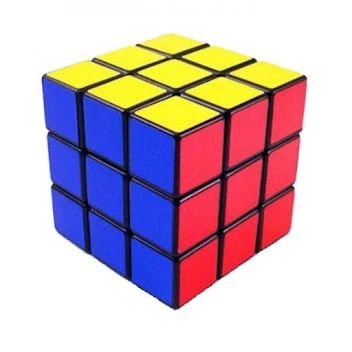Introduction

Rubik\'s Cubes have stood the test of time as one of the most iconic and beloved puzzles in history. Invented by Hungarian architect and professor Ernő Rubik in 1974, the Rubik\'s Cube quickly became a global sensation, captivating minds and challenging problem-solvers of all ages. With its colorful faces and deceptively simple appearance, the rubix cubes offers a delightful and immersive journey of brain teasers. In this article, we will embark on a colorful journey through the world of Rubik\'s Cubes, exploring their history, popularity, solving methods, and the enduring fascination they bring to enthusiasts.
The Birth of the Rubik\'s Cube
Ernő Rubik created the first prototype of the cube in 1974, initially naming it the "Magic Cube." Originally, the cube was intended as a teaching tool to help students understand three-dimensional geometry concepts. However, Rubik quickly realized that the cube had much more potential as a challenging and entertaining puzzle.
In 1980, the puzzle was licensed to the Ideal Toy Corporation and rebranded as the "Rubik\'s Cube." Within a few years, the Rubik\'s Cube became a global phenomenon, selling millions of units and sparking a worldwide craze for twisty puzzles.
Structure and Mechanics of the Rubik\'s Cube
The classic Rubik\'s Cube is a six-sided puzzle, with each face consisting of nine smaller colored stickers. It has a total of 54 stickers, and the goal is to align all the stickers of each color on their respective faces. The cube\'s internal mechanism allows for smooth rotations of individual layers, mixing up the colors and creating a seemingly chaotic scramble.
The Rubik\'s Cube is made up of several components:
Center Cubes: These are the stationary cubes on each face, and their color determines the face\'s identity.
Edge Cubes: The cubes with two stickers, located on the edge between two faces.
Corner Cubes: The cubes with three stickers, located on the corners of the cube.
Core: The central piece around which all other pieces rotate.
The Fascination of Solving the Rubik\'s Cube
Solving the Rubik\'s Cube has captivated millions of people worldwide for decades. The fascination lies in the challenge of restoring the cube to its original state after it has been scrambled. Despite its straightforward appearance, solving the Rubik\'s Cube demands strategic thinking, pattern recognition, and the ability to visualize complex movements.
Speedcubing: A Competitive Pursuit
As the popularity of the Rubik\'s Cube grew, so did the competitive aspect of solving it. Speedcubing, the sport of solving the Rubik\'s Cube as quickly as possible, gained traction, leading to the establishment of official competitions and records.
Speedcubers, as competitive solvers are called, practice tirelessly to achieve blistering solve times. They use a variety of solving methods and algorithms to optimize their solving efficiency. Some of the most popular methods include the Fridrich Method, Roux Method, and CFOP (Cross, F2L, OLL, PLL).
The World Cube Association (WCA) was founded in 2004 to govern official Rubik\'s Cube competitions and maintain a global database of records. Speedcubing has become a dynamic and thrilling competitive pursuit, drawing participants from all corners of the globe.
Benefits of Solving the Rubik\'s Cube
Beyond the sheer enjoyment of solving the Rubik\'s Cube, this brain-teasing puzzle offers numerous cognitive and developmental benefits:
Enhanced Problem-Solving Skills: Solving the Rubik\'s Cube involves breaking down complex problems into manageable steps, honing problem-solving abilities and critical thinking.
Improved Spatial Awareness: Manipulating the cube requires an understanding of spatial relationships, promoting spatial awareness and visualization skills.
Patience and Perseverance: Solving the Rubik\'s Cube can be challenging and may take time, encouraging patience and determination.
Hand-Eye Coordination: Rotating the cube\'s layers improves hand-eye coordination and dexterity.
Boosted Memory: Memorizing algorithms and solving sequences enhances memory retention and recall.
Conclusion
The Rubik\'s Cube continues to inspire and engage puzzle enthusiasts of all ages, inviting them on a colorful journey of brain teasers and challenges. With its iconic design, deceptively simple appearance, and endless possibilities, the Rubik\'s Cube remains a timeless classic that captivates minds worldwide.
From casual solvers to dedicated speedcubers, the Rubik\'s Cube offers a delightful and immersive experience that fosters problem-solving skills, spatial awareness, and perseverance. As enthusiasts continue to explore the fascinating world of twisty puzzles, the Rubik\'s Cube stands as a shining example of the enduring fascination and joy that puzzles bring to our lives.


